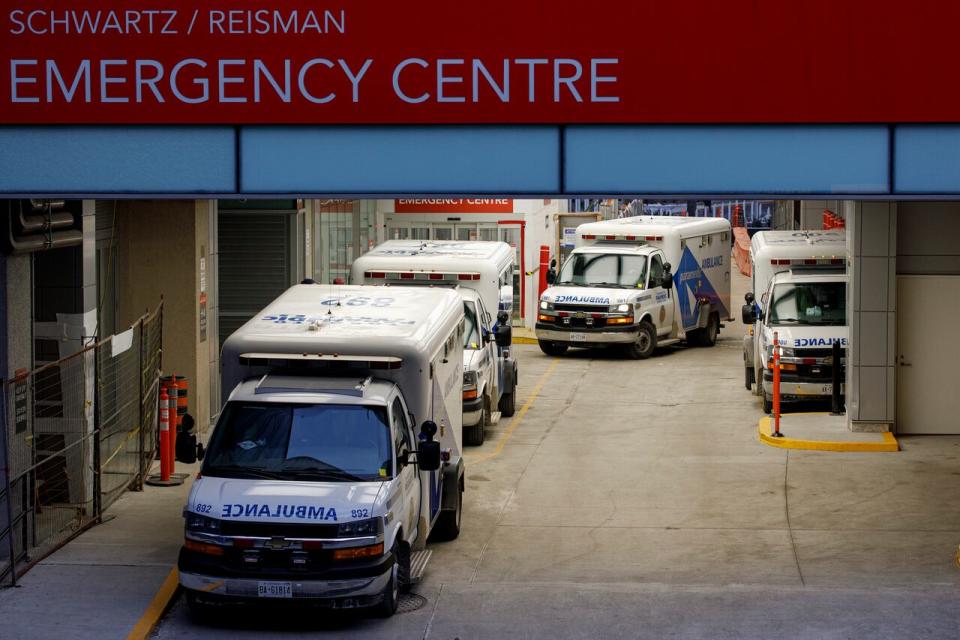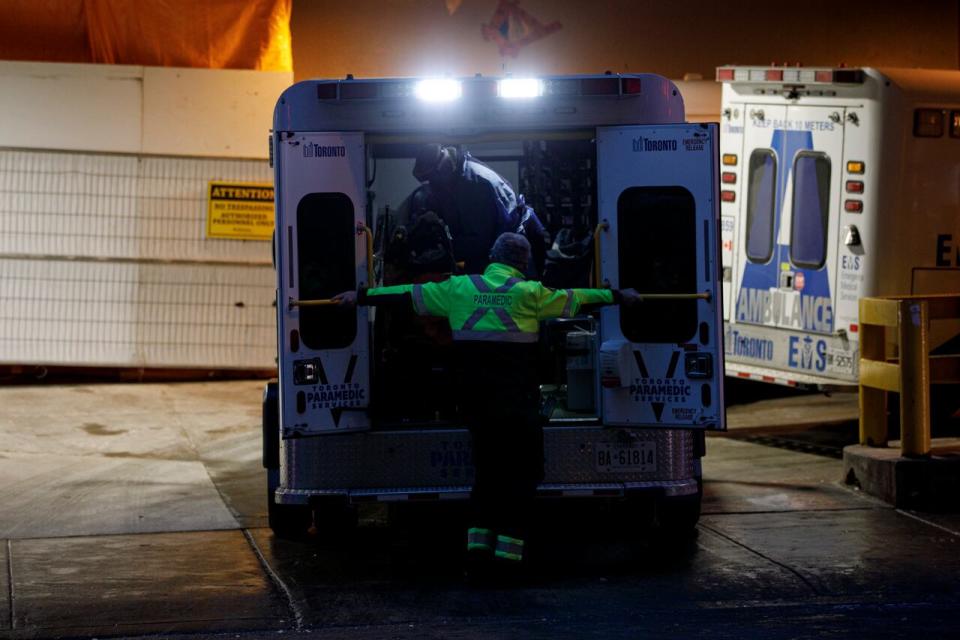No ambulances available in Toronto 1,200 times last year, report finds
Toronto had not a single ambulance available on 1,200 occasions last year, a staggering increase from 29 occasions in 2019, the city's auditor general says in a new report.
Auditor General Tara Anderson says in the report, released on Thursday, that the trend of having no ambulances available has increased since before the COVID-19 pandemic.
Anderson said the average length of the episodes, known as "Code Red," has remained consistent from 2019 to 2023 at two minutes.
However, the report says, there were 2.5 hours on average every day in 2023 where only five staffed ambulances were available across the city. The report also says Toronto residents who called for an ambulance for a medical emergency were waiting longer last year on average than they were in 2019.
Mayor Olivia Chow told reporters on Friday that Toronto city council will "100 per cent" look into ambulance response times by Toronto Paramedic Services in light of the report. Council's audit committee will consider the report on Friday, July 5.
"If someone is in trouble and call 911, they need the ambulance. They need the ambulance to show up quickly," Chow said.
"What is not acceptable is how long it takes for them to offload patients. Sometimes at the emergency ward I've seen, there are all these ambulance drivers, the EMS folks and police officers stuck waiting and waiting. They are not doing anything but waiting," Chow said.
"They need to offload their patients and they need to be able to get the hospitals to take those patients in quicker. It's taking far too long."
Chow said she will work with the Ontario government to find ways to speed up the process of offloading patients.
"It's not good use of the expertise that an ambulance driver has," she said. "We can do a lot better. When there's a health crisis, you need the EMS there immediately, not to wait for so long."

In the report, Anderson says average ambulance response times in Toronto are increasing due to staffing challenges and health-care system pressures.
City's AG makes 10 recommendations to improve service
The report contains 10 recommendations by Anderson to help the paramedic service improve its "efficiency and effectiveness."
Anderson recommends, among other things, that the service review its response time targets, report on performance by geographic areas and explore strategies to manage demand for its services better.
She also recommends that it develop a plan to divert some mental health calls with the help of Toronto police and Toronto Community Crisis Service, improve data analysis of frequent 911 call users and determine the "optimal level" of ambulances it requires to meet its needs.
"Timely ambulance emergency response is critical, particularly for people with medical issues requiring urgent attention at the hospital," reads a document, Audit At A Glance, accompanying the report.
"Every second matters for ambulance emergency response, particularly when it is a matter of life or death."

Offload delays, staffing challenges increasing wait times
The report says response times for life-threatening and "highest acuity" calls, which means calls deemed to be of highest priority based on a triage tool, were both higher in 2023 than in 2019.
For life-threatening and highest acuity patients, the average overall response times were six per cent and 14 per cent higher in 2023 than in 2019, respectively.
In 2023, for example, the average overall response time for a call about a sudden cardiac arrest was seven minutes and 52 seconds, while the average overall response time for the highest acuity patients was 9 minutes and 17 seconds.
"There were a number of factors contributing to the increase in average response times, with paramedic wait times in hospitals to offload patients (called offload delays) and staffing challenges being the main factors... Other factors include traffic congestion and having new in-training call takers and dispatchers," the report says.
The report also notes that "individual response times can be longer or shorter than these."
The report also found that the number and length of episodes where there was a low availability of ambulances staffed by two paramedics is increasing. The number of episodes increased from 1,300 in 2019 to 6,800 in 2023, according to the report.
According to the report, paramedics spent 60 per cent of their service time in hospitals in 2023, and this trend is increasing. The report says in 42 per cent of cases, it took more than 30 minutes to offload patients at hospitals.
Response times better in downtown Toronto, report says
Interestingly, the report says response times for high priority calls were better for patients in downtown Toronto than for those who lived outside the downtown core.
The report says the better response times downtown could be due, in part, to a higher number of staffed ambulances allocated to the downtown area, with its higher call volume.
Another important factor affecting response time is the location of the ambulance at the time of its dispatch. Management of Toronto Paramedic Services said that, due to offload delays, many staffed ambulance resources are drawn toward the hospitals, and that many of the city's larger hospitals are located in the downtown area, including specialty hospitals for high acuity patients.
"Response times have been increasing, and more emergency calls for the highest acuity patients did not meet the legislated targets for response times. In the face of healthcare system pressures, including hospital offload delays, we found more frequent and longer episodes of low availability of staffed ambulances to respond to the increasing number of emergency calls," the report concludes.
As for staffing challenges, the report says these can be a problem at peak demand times, such as on weekends, after 9 p.m. on weekdays, and during the summer and fall.
The report notes that Toronto's ambulance communications centre handles roughly 910 emergency calls daily. Of all 22 ambulance communications centres in Ontario, the one in Toronto is the busiest and receives about 16 per cent of Ontario's medical emergency calls, the report says.
Doctor shortage increasing pressure on paramedics
The report also says an "ongoing shortage of doctors is putting added pressure on paramedic services."
According to the Ontario College of Family Physicians, more than 516,000 Toronto residents do not have a family doctor. The college estimates that nearly one million people in Toronto may not have a family doctor by 2026.
"With the ongoing shortage of doctors, more people rely on paramedic services (and hospital emergency departments) as a safety net to access basic healthcare services they need when other options are unavailable," the report says.
Hannah Jensen, spokesperson for Ontario Health Minister Sylvia Jones, said in an email on Friday that the province has taken steps to improve decrease offload times in Toronto.
"Our government's four-part strategy to tackle ambulance offload times is focused on improving patient flow in hospital, reducing ambulance offload time, and avoiding unnecessary trips to emergency departments. We continue to work with hospitals and paramedic services across the province to reduce their offload times," Jensen said.


